Philip Colbert’s exhibition, Lobster Empire, has just opened in Rome at Musei di San Salvatore in Lauro. The title of the show, which features new paintings and large-scale sculptures, refers to Colbert’s signature lobster persona, a character that figures prominently in and is a driving force behind the artist’s work. The show is curated by Catherine Loewe and organized in collaboration with the Municipality of Rome I Centro, Bam srl and the Association “Via Veneto.”
“Philip’s dialogue between past and present resonates in particular with the essence of the Eternal City of Rome, a place where the exuberant contemporary life collides seamlessly with ancient civilizations,” says Loewe. “He works on an epic scale worthy of any Renaissance artist, his restless curiosity touches an uncovered nerve in our hyper-connected world, saturated with images and social media which projects itself towards new future frontiers.”
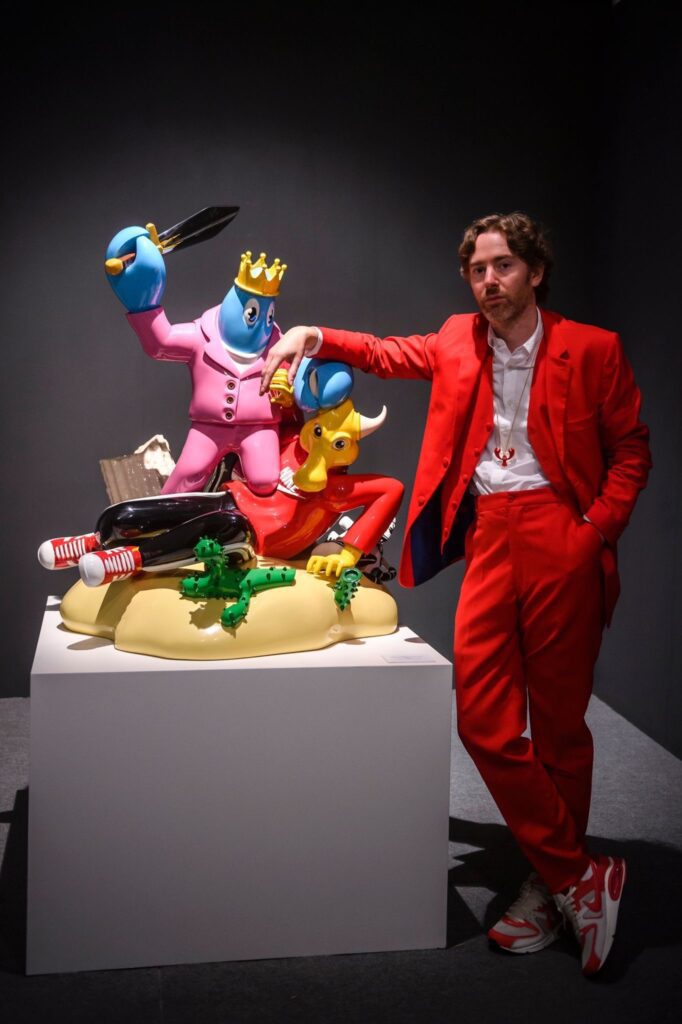
Lobster Empire also encompasses a sculpture show of twelve monumental works dotted along the beloved Via Vittorio Veneto, a symbol of the Roman Dolce Vita. In true Colbert fashion, these sculptures—in aluminum, bronze, or steel—reference famous artworks such as Duchamp’s Urinal, Van Gogh’s Sunflowers, or Cellini’s Perseus with the Head of Medusa, showing that as always, Colbert’s penchant for blending high art and classical antiquity with symbols of mass culture is still strong.
In a catalog newly released for the show, Loewe interviews Colbert about his work in the show, his inspiration, and his love of all things lobster. Click the link in bio to read the interview.
Catherine Loewe: Who inspired you the most in your childhood?
Philip Colbert: When I was a kid I had a baby sitter who was an artist from Edinburgh. She was in her seventies and I’d often stay at her house in the countryside with her husband who was an English teacher. It was the first time I had seen an artist’s studio and I was charmed by the bohemian bubble they lived in – it was a very bucolic house and I loved hanging out there. My dad also took me to the National Gallery in Scotland and showed me the phenomenal horse paintings of George Stubbs. Like all kids you start to develop this obsession, the gilt frame of a painting in my mind was the magic window of a treasure. Looking at old master paintings there was an otherworldliness in the representation of the scenes which captured my imagination.

CL: You famously said “I became an artist when I became a lobster.” What does your alter ego tell us about you?
PC: My intention with the creation of the lobster self wasn’t a decision I just took one day like aha – something’s missing in my personality, I’ll adopt the lobster as an alter ego. The story of this journey on an aesthetic level happened because I was constantly drawn to symbols, as sign posts of ideas which had the power to communicate, a bit like Egyptian hieroglyphs. I was looking for key motifs, assembling colors and shapes almost like a philosophy of branding in a form which is universally iconic with richer meaning, but also very accessible. This came from my interest in making wearable art, items of clothing that would break the normality of just being something you wear. I was always drawn to the formula of bold pop culture symbols like the cactus, fried eggs and lobster. The lobster was a reference to Surrealism, which I used a lot because of its iconic red shape and it became my calling card and what people associated me the most with. I was given the nickname “lobster man” so at the point it became a language association, I felt that this was the image that I would identify with and started drawing the lobster as a personified character rather than just a symbol.
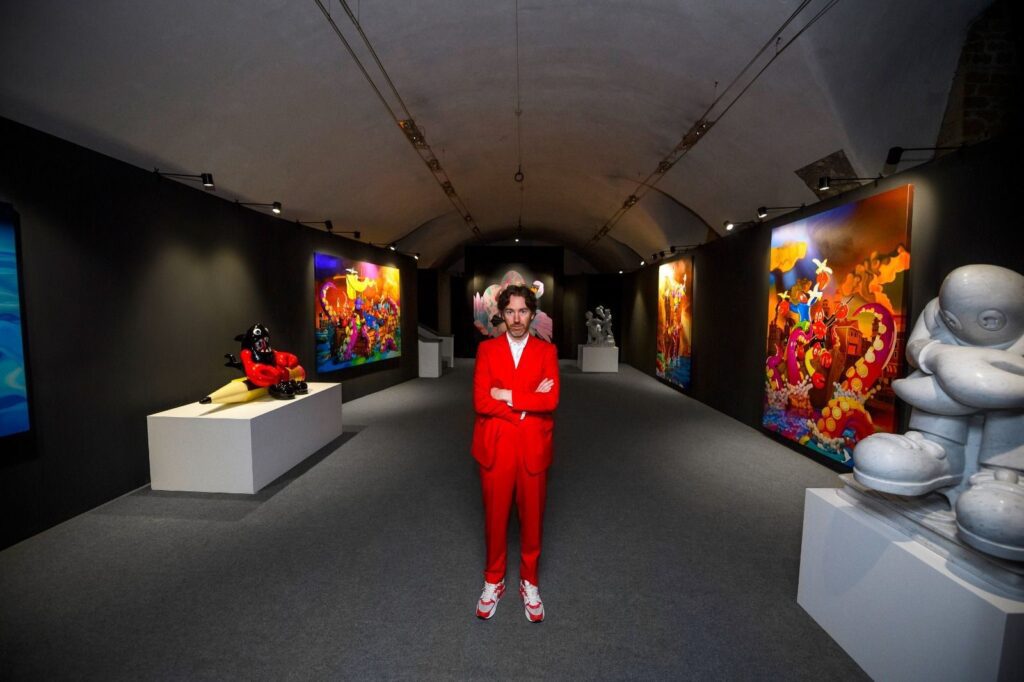
CL: The character of the lobster is often wearing a famous artwork costume, can you tell me more about your narrative journey through art history?
PC: I think of the lobster as my protagonist engaging in history, either going back or to the future. It becomes a device to investigate all kinds of things and play with ideas like time travel. The lobster in the historical battle scenes is metaphorically battling with the concepts of artists of the past. When I started developing the lobster in sculptural form, I recycled a lot of these ideas, for instance the lobster with the Duchamp Fountain was a reference to a head piece I had made. The iconic works like the lobster wearing Van Gogh’s pot of sunflowers was also a reference to my wearable art costume. The flower work was not actually intended as direct reference to Murakami or Kusama, the flower has inspired so much art as a metaphor for the temporal nature of beauty, so it seemed like a logical symbol for the lobster to pay homage to and have a sculpture costume of. Likewise the shark costume might reference to Hirst’s “The Physical Impossibility of Death in the Mind of Someone Living,” but probably more the fact that as a kid I was petrified of sharks and really captivated by the film Jaws, so it is definitely a fear symbol which I used creating chairs, merchandise and the lobster costume in paintings and sculptures.

CL: Appropriation is deeply embedded in your work, not only modern and pop art but all the way back to antiquity – how do you feel about this exhibition in the historical context of Rome?
PC: It is particularly exciting for me to be showing in Rome as history and classical antiquity is a huge source of inspiration having studied the philosophy of Plato and Aristotle. I’ve been intrigued for a number of years by the great thinking of that period and obsessed by visiting the British Museum where you can see in remarkable depth some amazing historical artefacts. I use references to classical sculpture in many of my compositions and created a series of spoof amphora vases with lobster graphics. I’m fascinated by the ceramics and marble relics of ancient civilizations and this idea of evolving, that the human condition has remained the same and the role of creating things has existed for a long time before us.
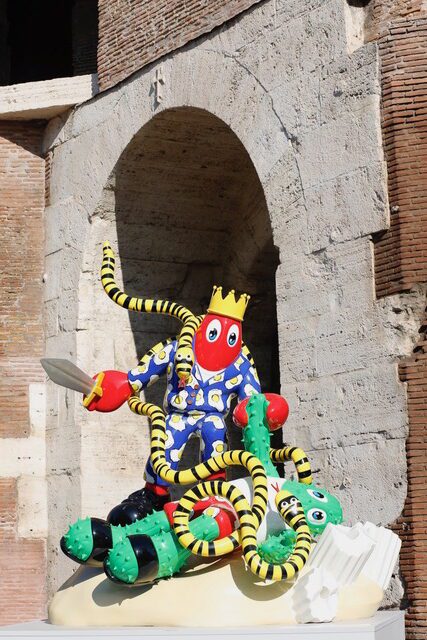
CL: Appropriation is deeply embedded in your work, not only modern and pop art but all the way back to antiquity – how do you feel about this exhibition in the historical context of Rome?
PC: It is particularly exciting for me to be showing in Rome as history and classical antiquity is a huge source of inspiration having studied the philosophy of Plato and Aristotle. I’ve been intrigued for a number of years by the great thinking of that period and obsessed by visiting the British Museum where you can see in remarkable depth some amazing historical artefacts. I use references to classical sculpture in many of my compositions and created a series of spoof amphora vases with lobster graphics. I’m fascinated by the ceramics and marble relics of ancient civilizations and this idea of evolving, that the human condition has remained the same and the role of creating things has existed for a long time before us.
CL: Which Italian artist has inspired you?
PC: I’m very interested in Giorgio de Chirico, who was based in Rome and whose paintings have many references to antiquity. What I love is the symbolism in his work, essentially exploring this eternal quest – the individual journey in life – that remains the same through time. The analogy from de Chirico is that we are living metaphorically speaking in the ruins of the past and we are propped up with all this thinking from before which though unseen, is very much present and influences us now. History is layered, we perceive it as a linear idea but actually it is somehow all existing at the same time. I’m interested in this cross-history bringing in references from different periods and mashing them together to create the weird morphing time thing. I try to connect to a deeper sense of history by juxtaposing these ideas together.
CL: You’ve talked about hyper consumption and oversaturation -are your paintings critiques of our way of life?
PC: I think of them as the wheel, an investigation into the mechanics of our state of being hyper-stimulated. The paintings show these patterns of behavior and the way we consume images. The social media hyper-scroll is such a peculiarity, going from one thing to another and just having everything at once, all the time, so I was interested in reflecting this within the painting itself. The quality of life is better today certainly than in the past when it was good for a few and much harder for the rest but there are lots of challenging things in life now like over-population concerns and ecological threats. At the same time there are also positive strands and I don’t want to take a position on these issues as what I’m trying to do is take my engagement with art history on my own journey. The very essence, the very activity of art I is itself a declaration of human spirit and that should do the talking- one can intellectualize art as much as you like, but at the end of the day it’s about the real impact art has, so over years I have created a visual vocabulary and reality that stands for itself. My philosophy is to create and develop my language and push the limits of the subject – fueling the possibility of imagination and of human expression. In my mind it’s ultimately about being bold enough to create a new language.
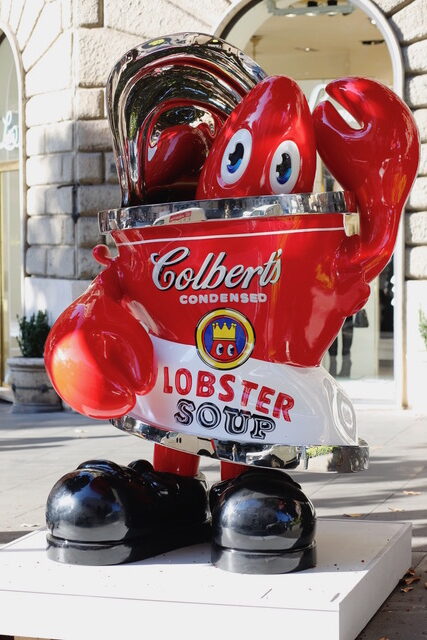
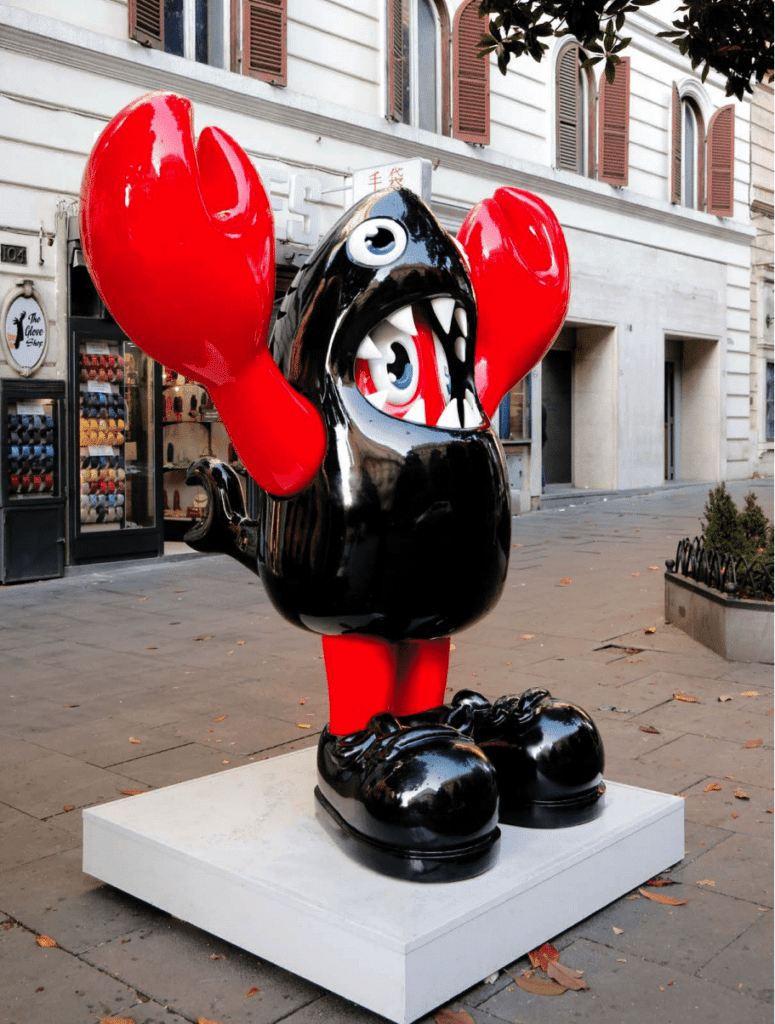
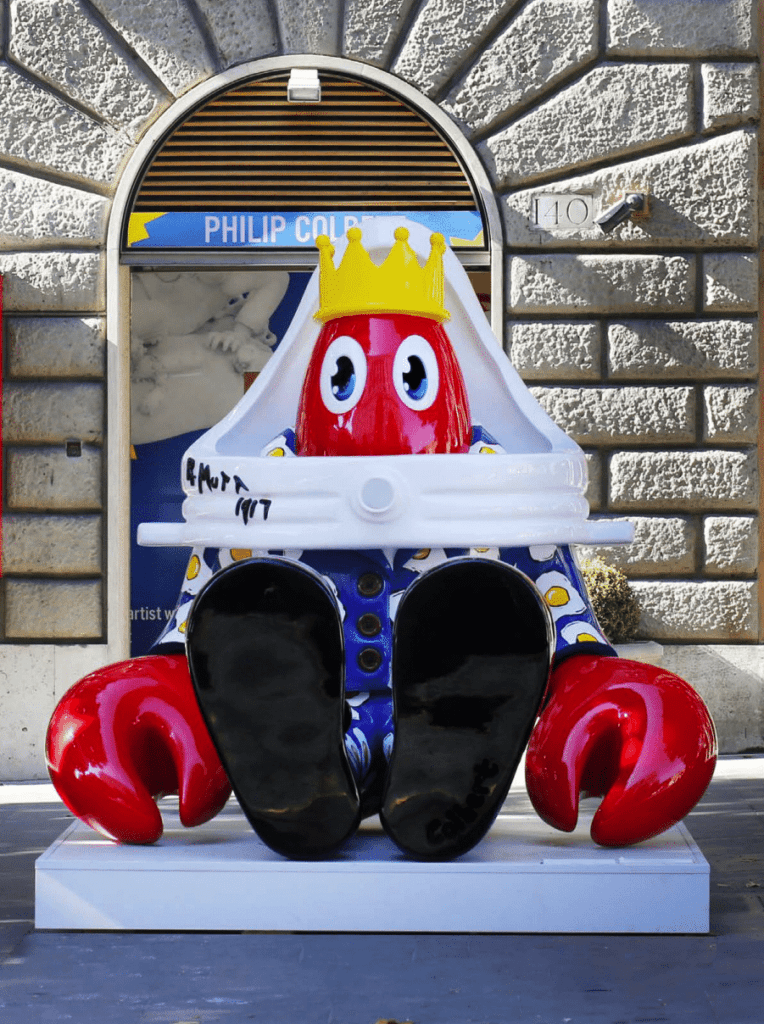

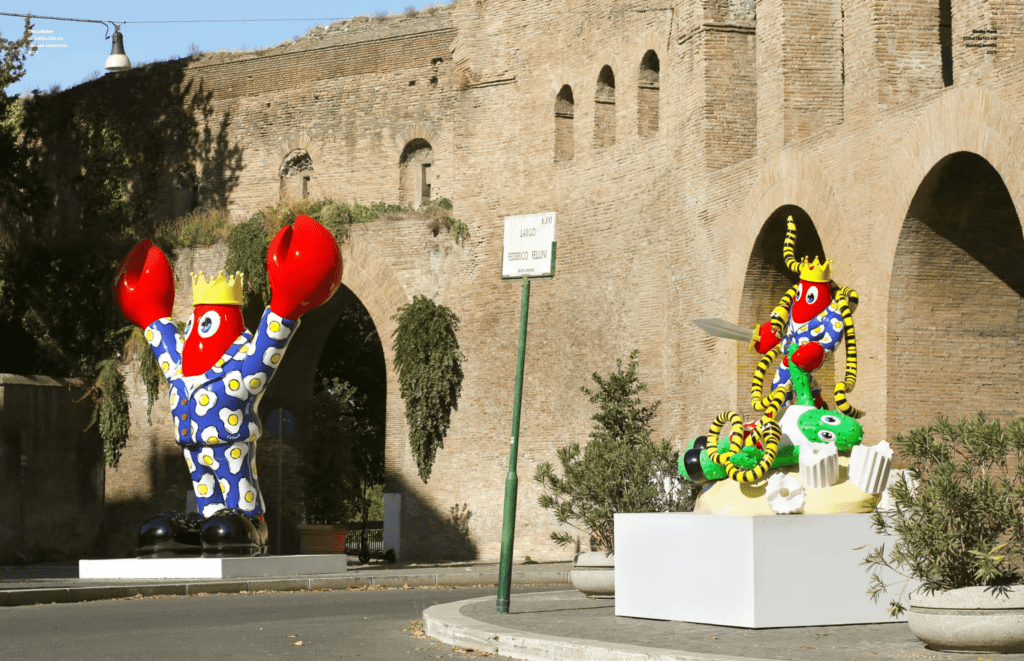

About the Artist
Philip Colbert (Scottish, 1979) is a London-based multidisciplinary artist working in painting, sculpture and NFTs. He is most known for his Neo-Pop Surrealism and his cartoon lobster character. Often referred to as the “godson of Andy Warhol,” his practice evokes the style of his Pop art forebears such as Warhol and Roy Lichtenstein, while also paying homage to other influential figures across the Western art historical canon including Post-Impressionist Vincent van Gogh, Flemish Baroque artist Anthony Van Dyck, and contemporary artist George Condo to name a few. Most of his cheeky, satirical works feature the lobster character as the central subject.
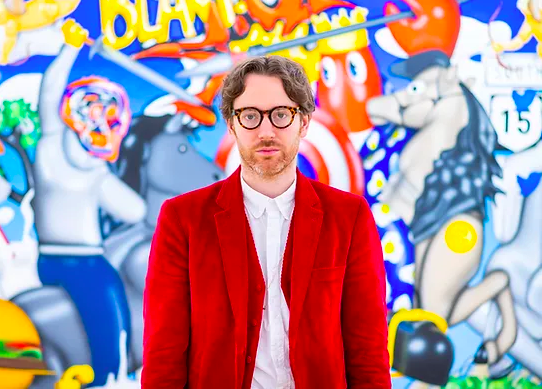
Lobster Empire runs through January 8, 2023 at Musei di San Salvatore in Lauro, Piazza di S. Salvatore in Lauro and along Via Veneto.

